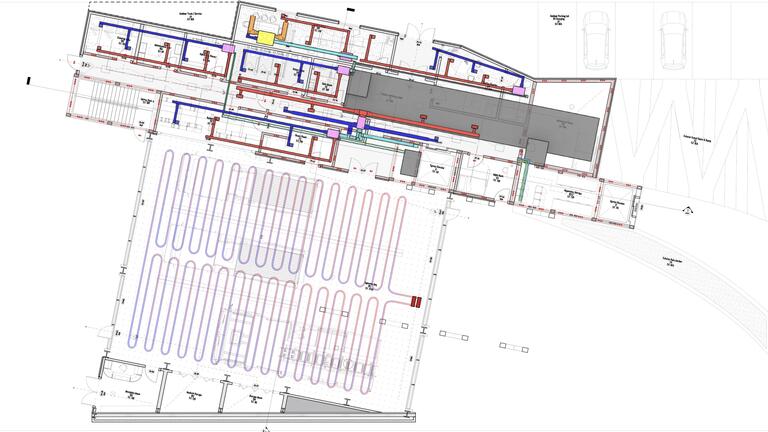Environment II: Design Integration of Active Building Systems
This course addresses the urgent need for sustainable building design amidst climate change and global challenges.

"Studio Integration Design for a Fire Station in Pittsburgh" by students Leyi Han, Isabella Shi, Angela Yang and Mingyang Zhu, instructed by Yiqun Pan.
This course addresses the urgent need for sustainable building design amidst climate change and global challenges. Students explore the integration of active systems (HVAC, lighting, renewables) with passive design for high-performance commercial buildings. We examine building codes (ICC, ASHRAE), energy efficiency and healthy environments, emphasizing U.S. standards with global perspectives. Key performance metrics like EUI and carbon intensity are covered. Students analyze how climate, resources and policy impact design approaches in diverse contexts, aligning with UN Sustainable Development Goals. Emphasis is placed on critical thinking and the student's role in shaping a sustainable built future.
Prerequisite Knowledge
Successful completion of 48-116, 48-215 and 48-315 or their equivalent is expected. No prior knowledge of active commercial systems and systems integration is assumed, but students are expected to understand residential heating and cooling load calculations, to be able to identify factors in passive building design that affect those loads, and to quantify their impact.